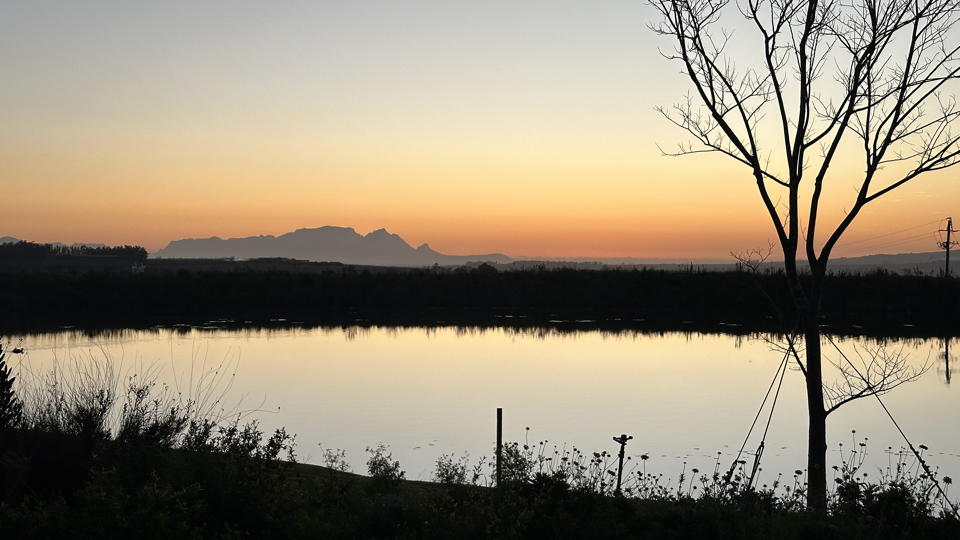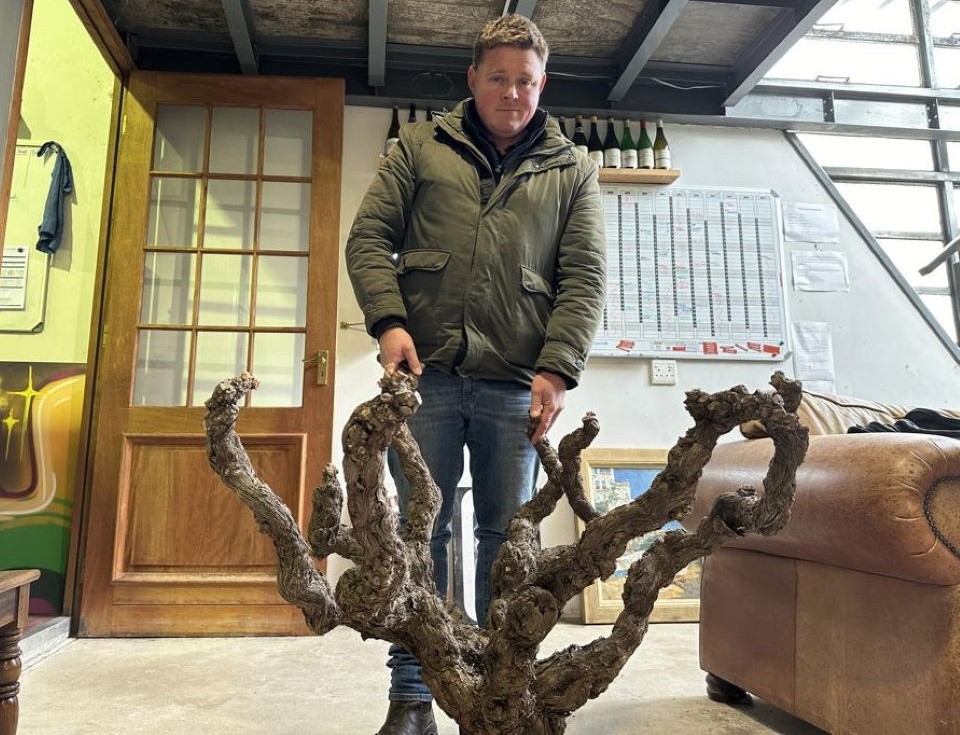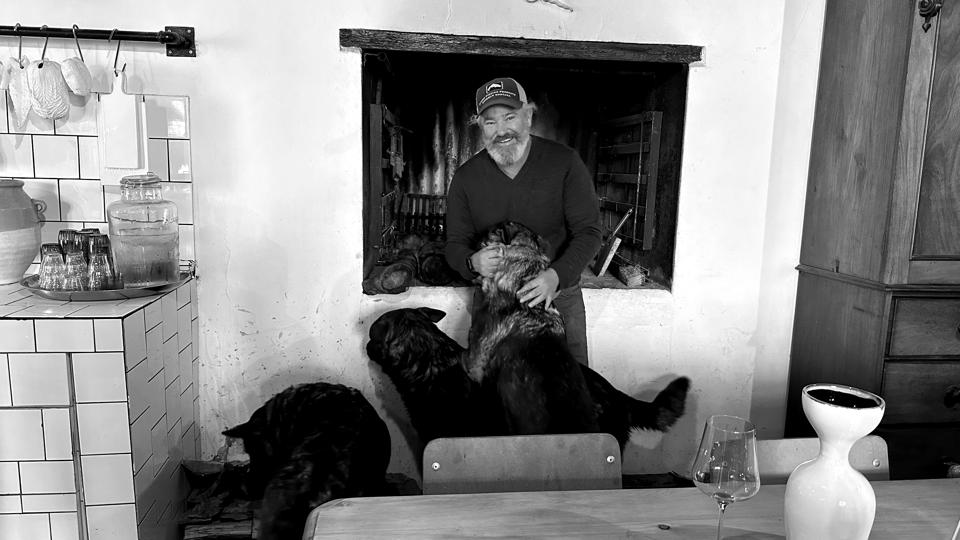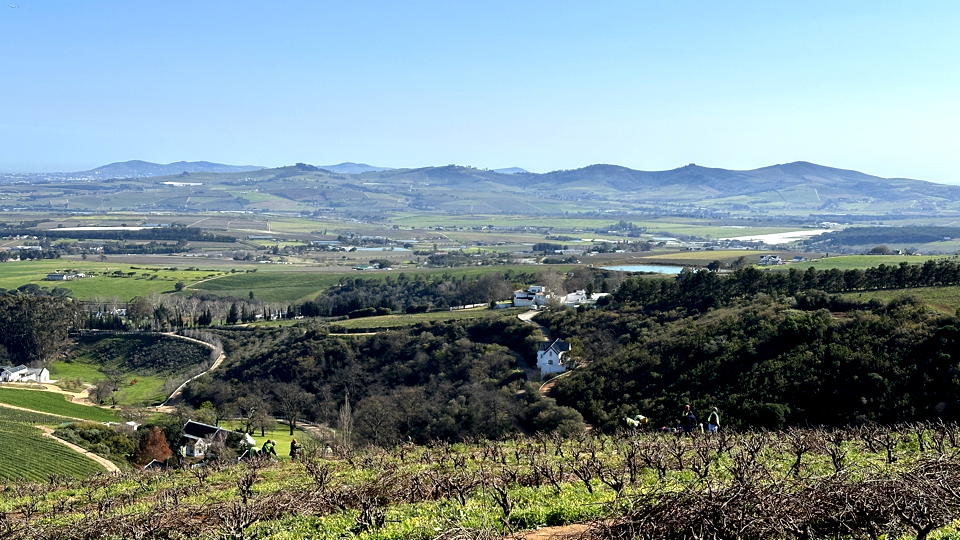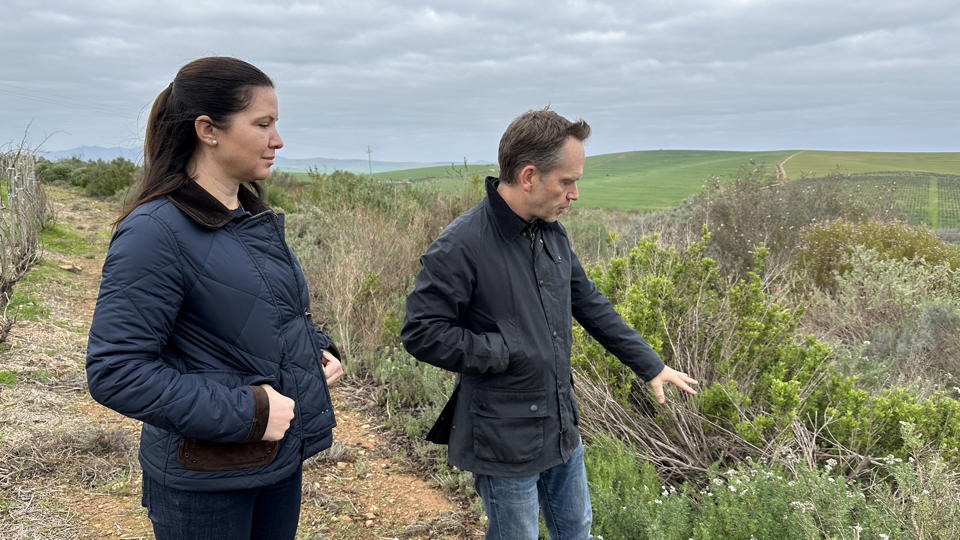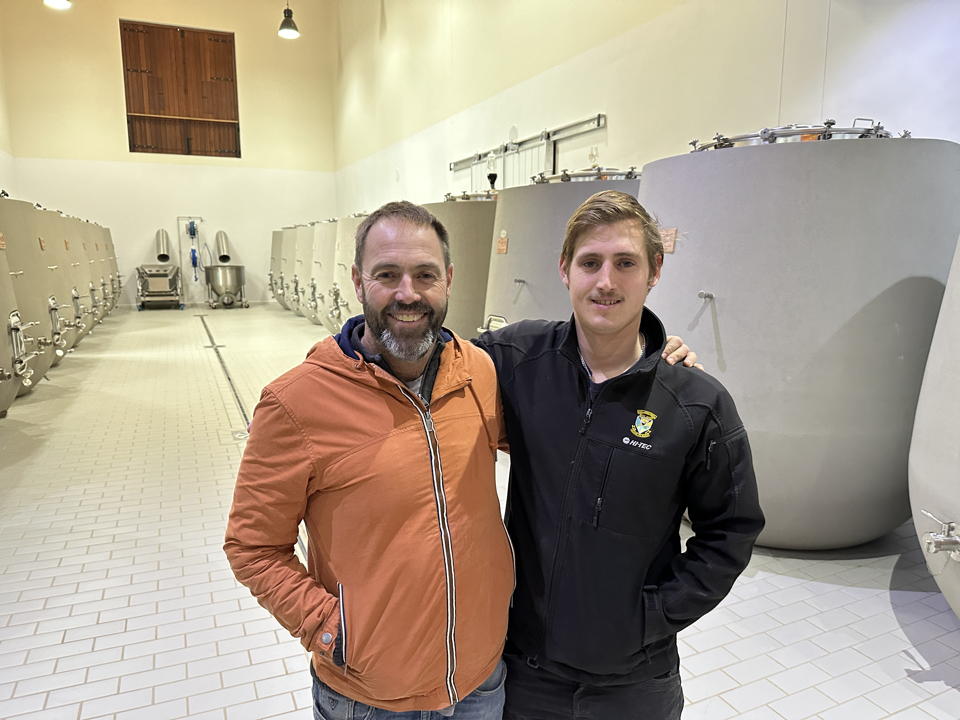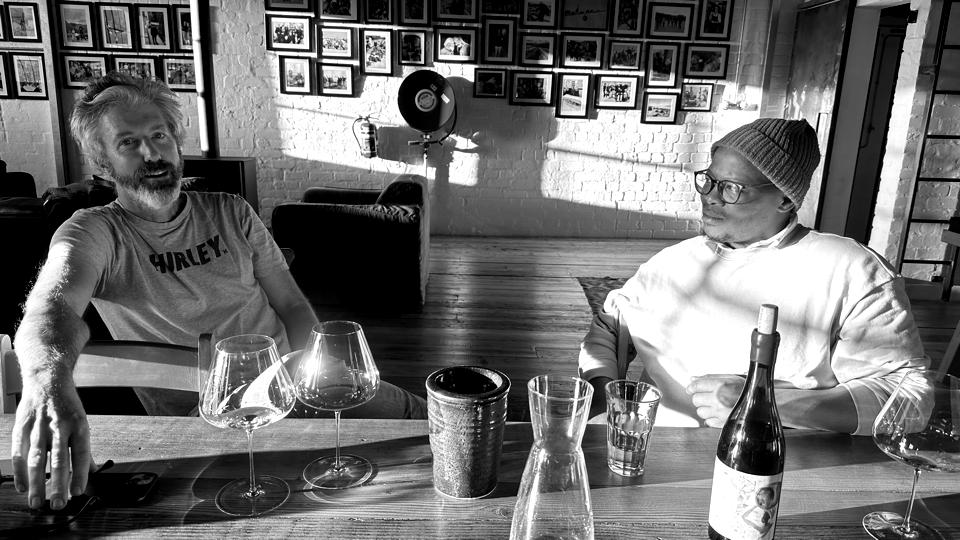Browse using the new Vinous website now. Launch →
Printed by, and for the sole use of . All rights reserved © 2015 Vinous Media
South Africa: Where Are We Now?
BY NEAL MARTIN | SEPTEMBER 19, 2024
From Bottom to Top
“South Africa is…”
“…not interested.”
“Oh. That’s a shame. Any particular reason why?”
“I hear the wines have gotten better, but you know how it is. Too much wine, too little time.”
“Before you nip off, can I ask, have you drunk a South African wine recently?”
“Only a bottle that a neighbor brought for dinner from the supermarket. It wasn’t exactly 100 points.”
“Hm… Low-end wines aimed at supermarket shelves are a minefield. There’s a gulf in quality between the bottom and top of South African fermented grape juice. The difference is that, unlike elsewhere, you don’t have to pay much more to upgrade from one to the other. If you are on a tight budget, stick to trusted growers such as the ‘Petit’ range from Ken Forrester or ‘Kadette’ from Kanonkop. You’ll find reviews of the latest releases plus others in this report that you’re about not to read.”
“I’ll let my neighbor know. In any case, I just can’t… what’s the word…connect with South Africa. It’s so far away.”
“South Africa is an isolated wine-producing country. The nearest viticultural regions lie thousands of miles away. That said, direct flights from the United States began last year, leading to an influx of tourists that was a knock-on in terms of winery visits. Nothing changes perceptions more than seeing a country first-hand. The country gets under your skin. That ethereal light, the Nature, the cuisine, the people.”
“I’ll keep that in mind.”
“Any other reasons why South Africa is not on your radar?”
“The wines are too cheap.”
“Too cheap?”
“Too cheap. I'd look a cheapskate if I rocked up to a dinner party with a Pinotage and other guests brought a fancy Bordeaux.”
“Even if it was great wine? A quandary that faces many winemakers is whether to increase prices not just for greater returns but simply to be taken seriously by those who misguidedly equate price with quality. One or two, like Tokara’s Telos and Capensis, which the Jackson family owns, have gone down that premiumization route. Why not? Personally, given the global economy and headwinds facing the wine industry, I’d maintain the status quo. Let quality win consumers over for natural and more stable growth, even if it is slow. In any case, surely the renown of winemakers such as Eben Sadie or Chris Alheit over-ride any lingering stigma against the country.”
“Come to think of it, I have drunk those before. I just never realized where they were from. To be honest, I sometimes spot South African wines on restaurant lists, but those Afrikaans names can be tongue-twisters. It puts me off. I choose something easier to pronounce.”
“That’s one aspect that could be improved. Winemakers are proud of their Afrikaans heritage. They want and should communicate that within wine names and labels. But it would be nice to see more translations or even just a symbol. I’ve come to South Africa for years and only just learned how to pronounce Boekenhoutskloof, let alone spell it. Sk'Windjies Vlei? Doesn’t trip off the tongue. It can disguise a fascinating backstory. For example, I never realized Eben Sadie’s lauded Mev. Kirsten was named after the previous owner of the country’s oldest block of Chenin until Sadie himself inadvertently mentioned Mrs. Kirsten. ‘So Mev. means Mrs.’, I thought to myself. There’s a human story there I had been oblivious to.”
Looking over towards Table Mountain from the balcony at Lukas van Loggerenberg’s home.
Vines of Respectable Age
“You say ‘oldest block’. When were they planted?”
“The 1920s. They’re not the oldest. That’s a 0.25-hectare parcel of Cinsault in Wellington planted in 1900 that forms Mullineux’s exceptional Old Vine Basson cuvée. Then there’s that 0.69-hectare plot of Sémillon in Franschhoek planted in 1902, the wellspring for several outstanding wines.”
“I never knew a New World country could cultivate vines that old.”
“It differentiates South Africa from many other wine-producing countries in the southern hemisphere…”
“Australia?”
“With the notable exception of Australia, Barossa in particular. Parcels of old vines that were blended into anonymity for use in commercial brands or distillation have been identified and given heritage status to protect them from being pulled out or bulldozed. The Old Vine Project (OVP), founded in 2002 by Rosa Kruger, has been instrumental in cataloging and safeguarding some 4,879 hectares of vine that are a minimum of 35 years old. Many are then matched with some of the Cape’s finest winemakers. A 'Certified Heritage Vineyards' seal makes it easy for consumers to pick these out on bottles. When we met, Kruger emphasized the importance of conserving these vines and giving vineyard workers skills to prune and tend them properly…”
“I remember seeing that black and white photo in last year’s report.”
“That’s right. While no guarantee of final quality…”
“I read Vinous for that…”
“…the OVP initiative signposts drinkers in the right direction and provides incentive.”
Chris Alheit poses with one of the Cape’s gnarly old vines. Hopefully, he’ll put it back before the next growing season.
Seriously Old Dirt
“Isn’t quality dictated by the terroir? Geology, altitude and orientation of the vineyard and all that malarkey?”
“Of course, it is the foundation of a good wine. South Africa has some of the oldest soils in the world: Precambrian shale and schists deposited between 550 and 1,000 million years ago. Most of the sandstone mountain ranges and hills like Bottelary and Malmesbury developed 250 million years back. Vilafonté named one of their labels ‘Seriously Old Dirt.’ That’s no euphemism.”
“How old is say, Burgundy, for example?”
“Around 175 million years. Such a long period of erosion in the Capelands manifested a dazzling diversity of soils: Calcic, Duplex, Podzolic, Plinthic, Oxidic, Gleyic, Cumulic and Lithic.”
“Terrific. Should I memorize those?”
“No. They don’t make riveting table conversations. Just know that when combined with the Cape’s dramatic topography, its sky-scraping granite mountains, valley floors and rolling hills, all influenced by their proximity to not one but two oceans, then it’s no wonder the Cape provides abundant meso-climates for an array of grape varieties. In recent years, some sites, what the French might call climats, have gained renown, and like Burgundy, its fruit is dispersed between multiple growers.”
“Examples, please.”
“I asked Rosa Kruger. The Eikelaan farm in Swartland, owned by Graham Willers, provides fruit for Mullineux, Nushka de Vos at Volpes, David and Nadia Sadie, Miles Mossop, Donovan Rall, Eben Sadie and, in the past, Chris Alheit. It’s higher up in Paardeberg, where there are amazing smaller vineyards and a really good farmer. There is the famous Kaaimansgat farm high up in Villiersdorp mountains owned by Johan le Roux, Chardonnay and Pinot Noir that has a queue of buyers: Crystallum, Capensis, Sauerwein, Lismore, John Seccombe from Thorne and Daughters. On the West Coast, Van Lill on Arbeidsend in Skurfberg planted with Chenin and Sauvignon Blanc that forms Eben Sadie’s namesake label, Chris Alheit for his Cartology and Anthonij Rupert. Or the Karibib Vineyard in Stellenbosch detailed in last year’s report, whose fruit composes up to 20% of Alheit’s Cartology, Bruwer Raats, Damascene, Sons of Sugarland, Mick Craven, Lukas Van Loggerenberg, Tembela Wines and Duncan Savage.”
“Fascinating. There’s obviously a complex network of buying and selling of fruit across regions like the Côte d’Or.”
“There’s one major difference.”
“What’s that?”
“In South Africa, they are open about their origin of fruit. In Burgundy, it is never disclosed. But this interchange of fruit fuels dynamism and explains how it accommodates a variety of styles, from bone-dry Sauvignon Blanc to powerful Rhône blends.”
Adi Badenhorst’s expanded farm supplies many winemakers with fruit; his dogs are not for sale, though.
A Variety of (Grape) Varieties
“I thought South Africa’s signature variety is Pinotage?”
“This crossing of Cinsault and Pinot Noir was once exploited for a glut of substandard wine that tarnished South Africa’s reputation, like riding a donkey and expecting to win the Kentucky Derby. Place it in the right hands, and its true potential will be revealed. To my own surprise, Pinotage ages extremely well. In the last four or five years, there has been a reappraisal, and winemakers are proud of Pinotage. Kanonkop just revels in the variety. Check out the Féniks from Scions of Sinai, one of a cadre of much more elegant expressions of the variety.”
“So, what else is there?”
“On this trip, the one grape variety that staked its claim as South Africa’s signature variety is Chenin Blanc. Outside the Loire, no other wine region approaches South Africa in terms of its most widely planted variety. Sure, much of it is fodder for entry-level brands, though when it gets serious, Chenin assumes multiple guises. It can be 100% Chenin like Chris Alheit’s Magnetic North or blended with Grenache Blanc like Scions of Sinai’s Rocinante or Sémillon like Mvemve Raats’s maiden MR Vespari. Some lean towards spiciness like Stark-Condé’s Monk Stone, others exploring its textural properties, almost waxy, like David & Nadia’s Plat’bos. Some, like Swanepoel, use some skin contact. It is the base for entry-level wines like Badenhorst’s Secateurs Riviera, or they aspire to be profound like his neighbor, Eben Sadie’s revered Mev. Kirsten.”
“Ah, Mrs. Kirsten!”
“Chenin thrives on granite soils.”
“Why is that?”
“I asked Jean Smit at Damascene that very question. Essentially, its free-draining soils help ripen Chenin Blanc before the heat spikes. In addition, less decomposed granite coupled with old vines, and incidentally around half of the area classified by the Old Vine Project comprising of Chenin Blanc, tends to produce smaller berries with thicker skins, thereby lending more structure or what Smit describes as ‘phenolic grip’. He cites greywacke soils in Stellenbosch as a source of Chenin with greater depth, whereas Malmesbury shale offers a richness that needs to be controlled.”
“So, it all rests on soil type?”
“Not just that. Increasing numbers of winemakers are tailoring their vinification and using concrete eggs and/or amphora. Factor in that many are between $20 to $30 a bottle on the shelf. Remind me, how much is white Clos Rougeard?”
“A bit more than that.”
“Chenin is both approachable and rewards time in bottle. It’s a polymath. The best Chenins represent startling value-for-money and have fast-developed cult status, limited production bottlings quickly selling out and creating an active secondary market.”
“Hm…I need to check those out. How about its ‘rival’, Chardonnay?”
“I’ve waxed lyrical about South African Chardonnay for a few years now. Cape winemakers revere Burgundy. It’s the Holy Grail. Many winemakers trained in the Côte d’Or and brought their knowledge home. However, given current Burgundy prices, Chardonnay presents a golden opportunity for those on a budget. The quality is already there: Lismore, Richard Kershaw, Storm, etc.”
“Why is Chardonnay so good in South Africa then?”
Looking over the hills in Stellenbosch might equate to the slopes in the Côte d’Or.
“I asked winemaker Kershaw that question. First, he attributes it to the Cape’s multitude of micro-climates in close proximity to the sea that engenders wine with more subtlety and restraint. Secondly, the prevalent use of Dijon clones can rein in tropicality and enhance what he calls ‘savory nuance.’ Thirdly, cooler micro-climates and, to quote verbatim, ‘…gives us the opportunity for fantastic norisoprenoid development’.”
“You lost me there.”
“Forgive him. He’s a Master of Wine. Basically, it is an aroma compound that can enhance floral and fruit scents.”
“In other words, they make Chardonnay smell nice."
“Correct. Kershaw cites Elgin and Hemel-en-Aarde as particular sources of top-grade Chardonnay as they are comparatively cool, the former benefitting from greater cloud cover. This can filter UV light and delay sugar development without shortening hang time and phenolic ripeness. It enables Chardonnay to deliver flavor while retaining alcohol levels around 13 to 13.5%, whereas Burgundy can creep over 14% in hotter seasons. With the Chardonnay Association now led by Andre Morgenthal, who helped establish the OVP, South African Chardonnay could steal market share from other regions in the next decade. The world needs to wake up to the caliber of Cape Chardonnay. Inserting one of Kershaw’s wines blind with a Chablis Les Clos from Dauvissat and a Meursault from Coche-Dury at a dinner recently, the Elgin Chardonnay easily held its own. That’s without factoring in price.”
“Syrah?"
“As Shakira once sang…points don’t lie. Arguably, the apotheosis of South African wines resides in its Syrah or Rhône blends. It matches the climate better than Bordeaux varieties. Its Mediterranean heritage enables it to handle heat spikes. The best examples in this category are unequivocally world-class: Boschkloof, Porseleinberg, Eben Sadie, Donovan Rall, Lismore, Lukas Van Loggerenberg or the Mullineux’s… The list gets bigger each year. Paradoxically, it remains a more difficult sell than Cabernet.”
“You’ve been critical of Bordeaux blends in the past, though…”
“Yes. They used to feel heavy, labored and predictable. But a new generation of Stellenbosch winemakers are exploiting cooler microclimates at higher altitudes and more wind-exposed areas. They have tweaked their vineyard husbandry, picked earlier and adopted more prudent oak regimes. There’s also a move towards greater proportions of Cabernet Franc spearheaded by the success of Raats Family Wines and now Taaibosch.”
“Any new varieties in the wings?”
“Cinsault was a crucial, if often undisclosed, component of Bordeaux blends during the days of apartheid, hence the diaspora of old vine material. It has seen a renaissance in the last decade. On this trip, Cinsault really came into its own, whether it is adopting what you might call a more ‘transparent’ style like Mick Craven’s Cinsault or Van Loggerenberg’s ‘Geronimo’ cuvée. Others adopt a fuller style like Badenhorst’s Ramnasgras.”
“Like I said, some wines are impossible to pronounce…”
“The best usually contains some whole bunches, around 50%, which, like Pinot Noir, imparts more complexity. It’s a pity that only 1.9% of the total vineyard area is planted with Cinsault. But it certainly consolidates its place within red varieties, another string in South Africa’s bow. Beyond that, a whole host of new varieties, such as Assyrtiko, are being planted. Adi Badenhorst is planning around 120 grape varieties on his farm. Unless you try it, how do you know? I took a video of him planting new vines in the vineyard, that will be published on Vinous next week.”
“I’ll take a look. Does he swear?”
“Of course. Contrast South African winemakers that are more or less free to experiment with new varieties to counter global warming, whereas countries like France are hidebound by appellation rules.”
It’s Getting Hot in Here
“How much is global warming impacting the Cape?”
“It was only several years ago that consecutive drought-like summers meant that authorities in Cape Town were counting down the days until they ran out of running water. Now reservoirs are overflowing. The pendulum swung too far the other way. The weather is just unpredictable, irrational even. The 2023 season was severely impacted by deluges at the end of February. Earlier-ripening varieties and warmer regions such as Swartland managed to pick before the rains; later-ripening varieties like Cabernet were impacted, with some notable names like Rustenberg and Taaibosch making the tough decision not to release some of their wines. Unsurprisingly, in 2023, you’ll find stark differences between wineries, between regions.”
“And how about vineyard practices?”
“Many of the producers in this report use minimal chemical sprays or fertilizers or eschew them altogether. Sustainability is a watchword, not least after the aforementioned water shortage. For example, water management is being stepped up at Vilafonté, which uses a more efficient drip irrigation system. Details in last year’s report. Another aspect of vineyard husbandry pertains to the age of its weathered soils. As Johan Reyneke reminded me, it means they tend to be low in organic matter, so increase the percentage by 'rolling over' cover crops instead of mowing or spreading mulch under the vines. Chris Alheit also advised the growing use of grazing animals amongst the vines. He has just introduced a sheep program in Nuwedam, while Craig Wessels at Restless River uses ducks to eradicate his vineyard of snails.”
“How about organic or biodynamics? More and more consumers are mindful of producers’ credentials in terms of the environment.”
“There is a strong drive towards organic viticulture with many practicing biodynamics. Few are certified, partly because of cost. Inspectors can easily visit vineyards in Europe, but Johan Reyneke told me how they had to pay inspectors’ travel costs to South Africa. Fortunately, they recently introduced a scheme whereby producers can share that burden. Even then, he told me that his certification is only recognized within South Africa and not for exports.”
“I’ve also heard about regenerative certification. What is that?”
“This takes a more holistic approach: minimizing soil disturbance, maintaining biodiversity and introducing livestock. Consider Burgundy growers’ concerns about monoculture or the trend in Bordeaux to inter-plant orchard trees or create forest corridors. The Cape has two advantages insofar as there is the space to introduce such things, plus the fact that vineyards were originally part of large farms anyway. In many cases, they still are.”
Cover crops in Stellenbosch.
Kings of the Wild Frontier
“What do you mean?”
“One winemaker in Swartland told me how one of his revered labels comes from a small plot of a 1,000-hectare cereal farm. The estate’s proprietor is indifferent towards wine and has never been inclined towards winemaking, so he leases it to somebody who is. Terms are set at 10 years in South Africa compared to 25 years in France. Without legal ownership, there’s always the risk that the owner will see profits from his vines and decide not to renew the contract.”
“Maybe winemakers should become farmers?”
“They already are. You cannot help being struck by the wilderness of the terrain, a feeling of ‘frontier’ viticulture where winemaking is part of a diverse ecosystem. There’s a more holistic ethos whereby vines are one part of the land, a part that, to thrive, must interact with others. This ethos has encouraged reintroducing indigenous flora and fauna to enhance biodiversity. For example, at Reyneke, they are planting swathes of fynbos to mitigate against soil erosion, which has recently become a huge problem in Burgundy.”
“Ah yes, the storm in Gevrey-Chambertin in 2022. Didn’t Cyrielle Rousseau transport tons of earth back up the slope of Clos Saint-Jacques?”
“She’s not the only person that suffered this. Duncan Savage told me how severe storms on September 23 and 24 caused severe soil erosion on the steep incline in the parcel in Karibib, which was only recently acquired. It’s why there is currently a lot of discussion about introducing the aforementioned fynbos ‘corridors’ in conjunction with contouring vineyards, creating a topography that minimizes erosion in anticipation of more frequent storms. Rosa Kruger has designed several vineyards to counter this growing problem and explained the importance of not just installing measures to prevent erosion but installing channels to allow excess water to run off efficiently.”
“Yes. I heard about those storms last year.”
“They were catastrophic. Stellenbosch was deluged with 193mm in a single day. Eleven people lost their lives, and 80,000 people were without electricity. Driving towards Hamilton Russell in Hemel-en-Aarde, half the road had been washed into the river below. These violent events directly affect viticulture, for example, reinforcing training systems so they don’t collapse in strong winds, orienting vineyards away from their full force. It’s noticeable how more vines are being cultivated on single stakes that are more resilient to such conditions.”
Chris and Mullineux showing their fynbos plantings at their Roundstone farm.
All For One, One For All
“It’s tough life being a winemaker in the Cape.”
“That is true everywhere, but you’re right. That’s why it has fostered a social aspect, a mutual support network, that I have not encountered anywhere else. When the chips are down, and trust me, they will, at some point, someone will have your back. Just ask Samantha O’Keefe at Lismore after her farm and home were destroyed by wildfire five years ago.”
“I remember the video a few months afterward on Vinous.”
“A vast majority of winemakers graduated from Stellenbosch University or Elsenberg Agricultural College or started their fledgling operation out of a friend’s facility. This vocational and social network includes teams of vineyard laborers. While many wineries in Europe contract pickers each year from specialist recruitment companies, in South Africa, pickers’ housing, education and health can be entirely dependent on the winery. This goes back to regenerative viticulture, which was discussed earlier, expanding it to include the well-being of your workers. The Cape offers as much risk as it does reward. You might receive critical praise, but that does not necessarily translate into the financial payback you’d find in parts of France or California. There’s negligible government support, no free handouts.”
“How do you mean?”
“Touring Eben Sadie’s new winery at his Rotsvas farm, equipped with water recycling, solar paneling and just about every sustainable technology available, I thought about how similar projects are heavily subsidized by bodies such as the EU. Of course, like any other wine-producing country, outside investors and absentee owners build extravagant wineries. When it’s done well, for example, at Tokara, you get a luxurious winery that attracts visitors alongside fine wine, though often wine is relegated to a secondary consideration. That has historically been the case in Franschhoek. These affluent estates often lie in stark contrast to even the most praised wineries that manage to produce some of the country’s finest wines with basic equipment, without technology, in part because they’re not charging top dollar for their wines and so cannot afford rows of densiometric machines or bespoke vats.”
“So, what does that mean?”
“Money doesn’t guarantee the best wine. It never has, and it never will do. That’s a discussion for another time. But I do think that the 'back against the wall' mentality, the necessity for resourcefulness and friendship with fellow winemakers, has driven its best winemakers to achieve great heights.”
Eben Sadie with his son, Markus, in the new vat room of their near-completion winery.
Where Are We Now?
“So, where is the wine industry in 2024?”
“It stands at a crossroads. South Africa found its own voice thanks to the Swartland Revolution and ‘new wave’ producers such as Justin van Wyk, Callie Louw, Donovan Rall and David Sadie. They were surfing the wave of newfound popularity. Established wineries appointed young guns like Matt Day at Klein Constantia or with radically different approaches, such as Danie Steytler at Kaapzicht or Peter-Allen Finlayson at Gabrielskloof. Chris Alheit remarked that he had always known the spotlight would not shine on them forever. Cool dudes with a surfboard under one arm and secateurs in the other… That was a refreshing image within the somewhat stuffy arena of wine. When some wine regions covet exclusivity and luxury branding, South Africa represents something inclusive, authentic, self-effacing and, a virtue oft-forgotten, fun.”
“Wine is fun? Who knew?”
“Now, in 2024, those same winemakers oversee established brands with track records. They have reputations to uphold. They’ve got families, a legacy they want the next generation to inherit. There is a palpable sense of consolidating portfolios and investing for the long term, exemplified by Eben Sadie’s winery or Savage’s investment in Karibib. Sure, many still surf on weekends and gather around the braai, but there’s a gradually changing outlook. Several winemakers mentioned the difficulty of getting a new brand off the ground today. It begs the question of what’s next?”
“What is next?”
“Nobody has a crystal ball. There are many unanswered questions. What will the impact of more turbulent weather be? Can South African wine appeal to the Black majority, which is vital for market stability, so that wine is not seen along racial lines? Can it nurture more Black winemakers like Kiara Scott at Brookdale, Mzokhona Mvemve at Mvemve Raats and Shawn Mathwyse at Ken Forrester? Maybe even more importantly, can it create more winemakers like Carmen Stevens and Berene Sauls of Tesselaarsdal, who own their brands? Can it gain market share in America?”
“Can it
crack America? South Africa is still niche.”
Duncan Savage with assistant winemaker Banele Vakele. Vakele was born in the Khayelitsha township and became a CWG protégé, which led to working with Savage on condition that they part ways after five years for Vakele to establish Tembela Wines.
“It is making inroads, certainly amongst sommeliers and younger consumers, though a vast swathe of cognoscenti still looks down their noses, stuck with outdated definitions of ‘fine wine’. That seems to be changing. Just look at the burgeoning overseas interest in the Cape Winemakers Guild auction or the clamor and prices for mature bottles. Two or three distributors are coalescing serious South African portfolios in the United States. One positive trend is that premium brands are driving growth. The value of low-cost bulk wines has declined, a trend in all export markets. It explains why hectares under vine have fallen from just under 100,000 in 2013 to 87,000 in 2023. Demand has plateaued in the UK. Importers are more cautious and more selective.”
“I guess they should read your report.”
“Of course! Two intense weeks of tasting established names, large concerns and artisan winemakers, major wine regions but also branching out to the extremes like the South Coaster collective. This year marked my first excursion into the devastatingly beautiful Breedekloof Valley.”
“Not heard of that.”
“Maybe not. But you might have drunk its wines since Breedekloof provides fruit for many commercial brands. For this report, I zoned in on its burgeoning limited quality-driven Chenin Blancs from growers like Olifantsberg, Opstal and Daschbosch.”
“It seems like there are many parts to the South African wine scene. There’s much to discover.”
“Yes, South Africa is…”
“…not what I thought it was.”
© 2024, Vinous. No portion of this article may be copied, shared or re-distributed without prior consent from Vinous. Doing so is not only a violation of our copyright, but also threatens the survival of independent wine criticism.
You Might Also Enjoy
White-on-White: Porseleinberg 2010-2020, Neal Martin, November 2023
The A to Z of South Africa, Neal Martin, November 2023
Growing Up ‘n Getting Wiser: South Africa in 2022, Neal Martin, September 2022
Back In Black: Kanonkop Black Label Pinotage 2006-2019, Neal Martin, August 2022
Show all the wines (sorted by score)
- Alheit Vineyards
- Amyrah
- Anwilka
- Ashbourne
- Badenhorst Family Wines
- Badsberg
- Beeslaar
- Belle Rebelle Estate
- Bersig Estate
- Black Pearl Wines
- Boekenhoutskloof
- Boschkloof Wines
- Botha Cellar
- Brookdale
- Brunia Wines
- Bruwer Vintners Vine Exploration
- Capensis
- Cape Point Vineyards
- Cap Maritime
- Carinus Family Vineyards
- Carmen Stevens
- Cavalli Estate
- Charla Haasbroek Wines
- City On A Hill
- Constantia Glen
- Craven Wines
- Creation Wines
- Crystallum
- Dalkeith Wines
- Damascene
- Daschbosch
- David & Nadia
- Deep Rooted Wines
- De Keur
- DeMorgenzon
- Draaiboek Wines
- DTK Wines
- Edgebaston Vineyard - David Finlayson Wines
- Eenzaamheid
- Fogwell
- Francis Wines
- Gabriëlskloof
- Glenelly Estate
- Hamilton Russell Vineyards
- Hartenberg Estate
- Hasher Family Wines
- Holism
- Iona
- Jason's Hill Private Cellar
- Jordan Wine Estate
- Kaapzicht
- Kanonkop Wine Estate
- Kara Tara
- Keermont Vineyards
- Ken Forrester Wines
- Klein Constantia Estate
- Kruger Family Wines
- Ladybird
- Lalela
- Landskroon
- Le Chant
- Leeu Passant
- Lismore Estate Vineyards
- Longridge Estate
- Lourens Family Wines
- Lukas Van Loggerenberg
- Maanschijn
- Mason Road
- Meerlust Estate
- Merwida
- Metzer
- Miles Mossop
- Moya Meaker
- Mullineux
- Mvemve Raats
- Natasha Williams Signature Wines
- Naudé Family Wine Company
- Neil Ellis Wines
- Newton Johnson Family Vineyards
- Oldenburg Vineyards
- Olifantsberg
- Opstal Wines
- Painted Wolf Wines
- Paul Cluver
- Pilgrim Wines
- Porseleinberg
- Raats Family Wines
- Rainbow's End
- Rall Wines
- Restless River
- Reyneke Wines
- Richard Kershaw Wines
- Rickety Bridge
- Rogge Cloof
- Roundstone
- Rustenberg
- Saga Vineyards
- Sakkie Mouton Family Wines
- Salt River
- Savage Wines
- Scions of Sinai
- Shannon Vineyards
- Sjinn
- Slanghoek
- Snyman Wines
- Southern Right
- Stark-Condé
- Storm
- Swanepoel Wines
- Taaibosch
- Tembela Wines
- Tesselaarsdal Wines Pty
- Thamnus Wines
- The Earth Beneath Our Feet
- The Sadie Family Wines
- The Saldanha Wine & Spirit Co
- Thorne & Daughters
- Tokara
- Trade Wind Wines
- Van Niekerk Vintners
- Van Wyk Family Wines
- Vergelegen
- Vilafonté
- Vulpes Wines
- Waterford Estate
- Weather Report
- Winshaw Vineyards
- Wolf & Woman Wines

